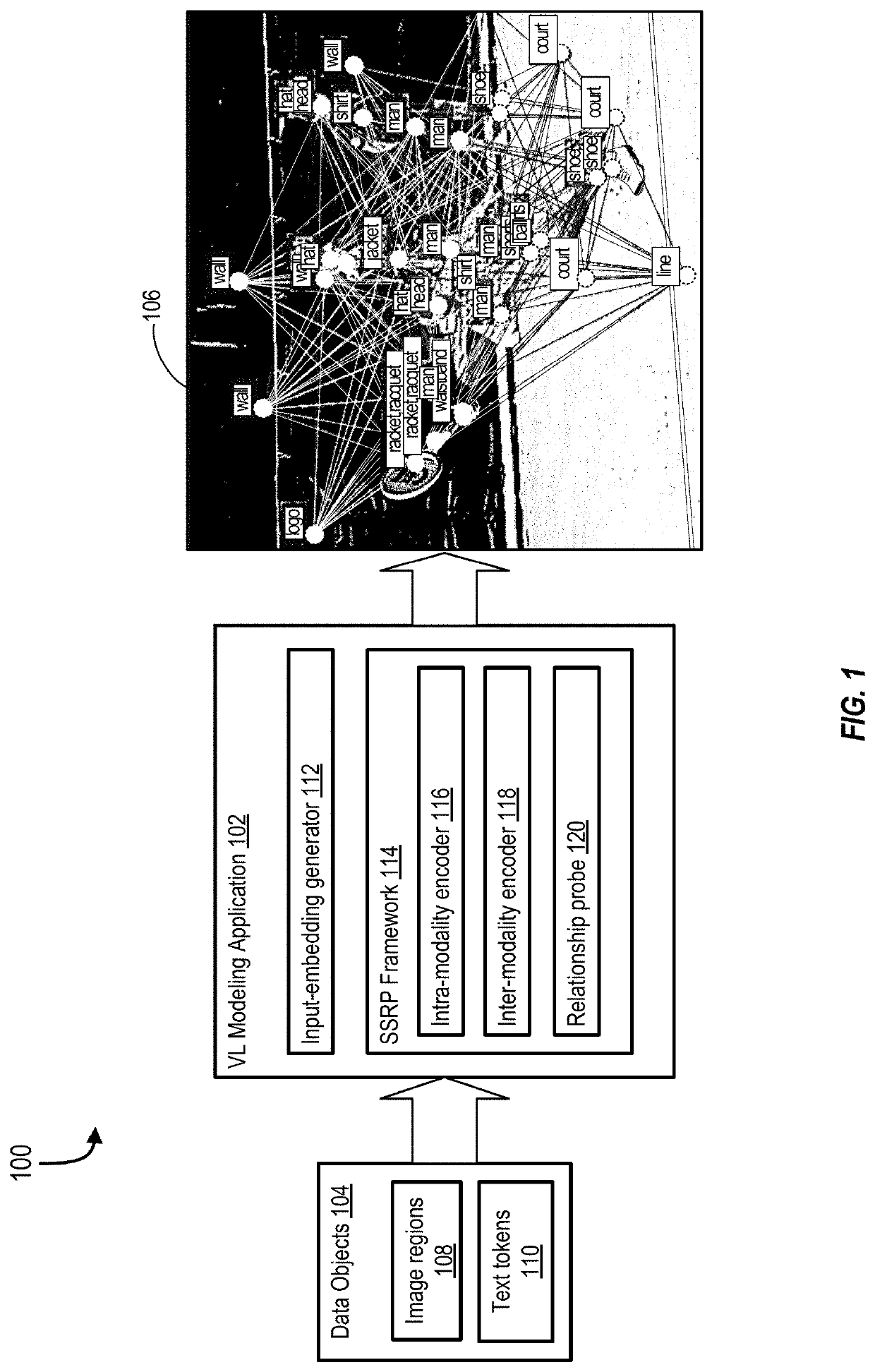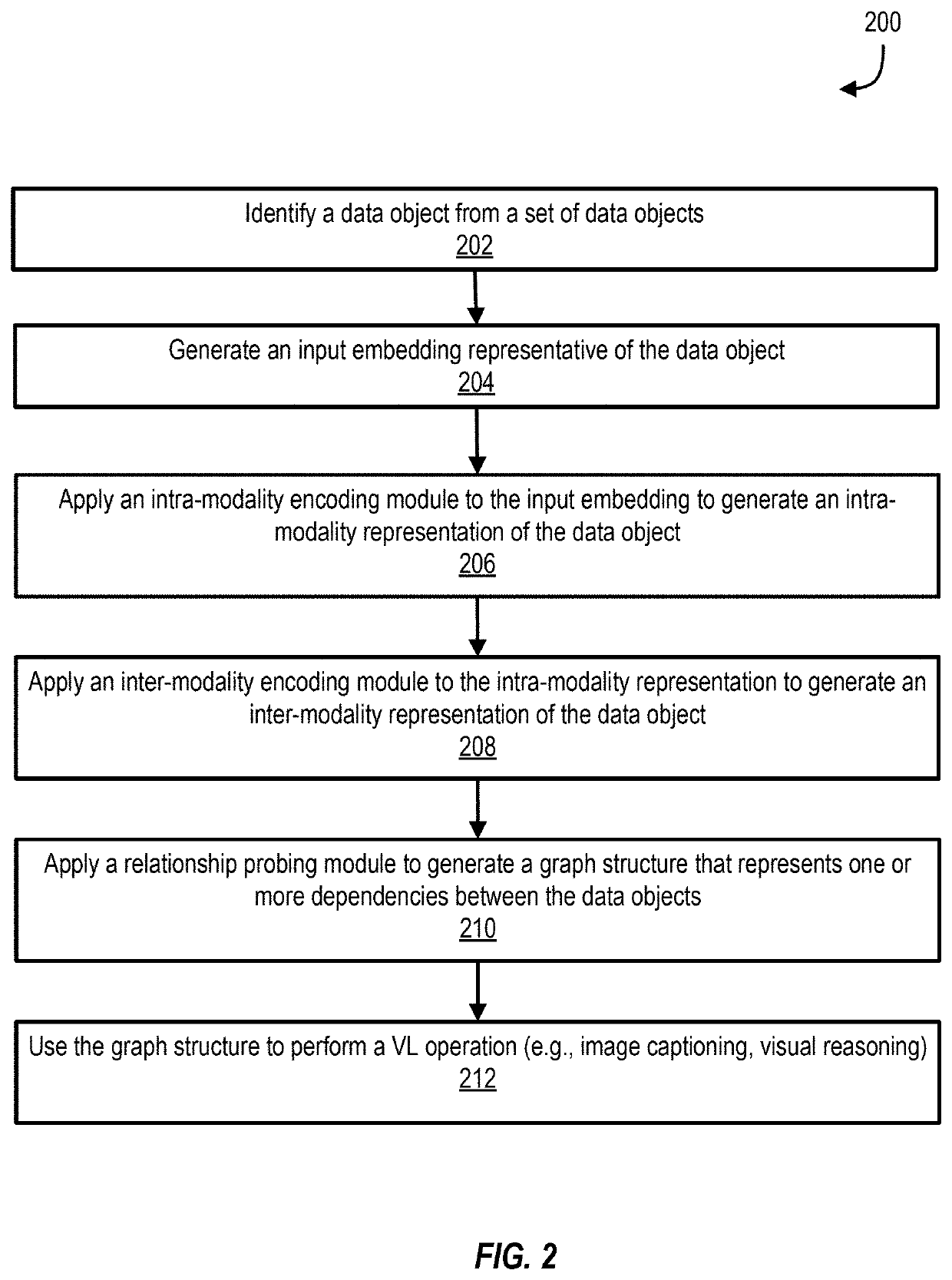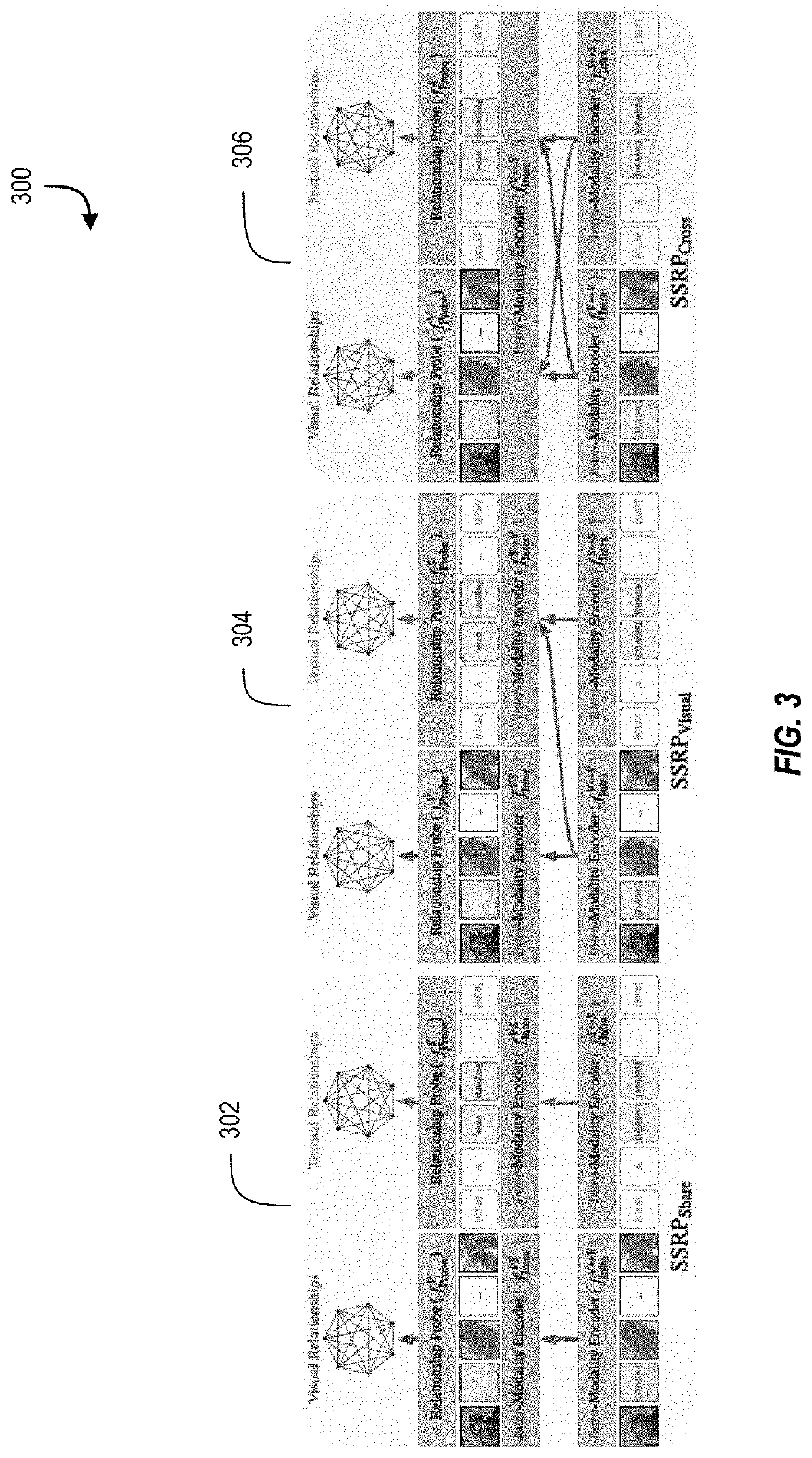Self-supervised visual-relationship probing
a visual relationship and graph technology, applied in the field of self-supervised visual relationship graph generation, can solve the problems of difficult to collect enough manual annotations to sufficiently represent important but less frequently observed relationships, low total number of relationships, and difficult to generate a visual relationship model based on the results
- Summary
- Abstract
- Description
- Claims
- Application Information
AI Technical Summary
Benefits of technology
Problems solved by technology
Method used
Image
Examples
Embodiment Construction
[0021]Certain embodiments described herein can address one or more of the problems identified above by generating graph structures (e.g., visual relationship models) that accurately identify relationships between data objects (e.g., regions of an image). The visual relationship models are then used to perform various vision-and-language tasks, such as image retrieval, visual reasoning, and image captioning.
[0022]In an illustrative example, a vision-language (VL) modeling application defines a set of regions in an image. For instance, if the image depicts three different objects (e.g., a container, a piece of hot dog, and a glass of water), the VL modeling application defines three regions, such that each region represents one of the objects depicted in the image. For each region, the VL modeling application generates an input embedding representative of the region. The input embedding identifies one or more visual characteristics of the region and a position of the region within the...
PUM
 Login to View More
Login to View More Abstract
Description
Claims
Application Information
 Login to View More
Login to View More - R&D
- Intellectual Property
- Life Sciences
- Materials
- Tech Scout
- Unparalleled Data Quality
- Higher Quality Content
- 60% Fewer Hallucinations
Browse by: Latest US Patents, China's latest patents, Technical Efficacy Thesaurus, Application Domain, Technology Topic, Popular Technical Reports.
© 2025 PatSnap. All rights reserved.Legal|Privacy policy|Modern Slavery Act Transparency Statement|Sitemap|About US| Contact US: help@patsnap.com



